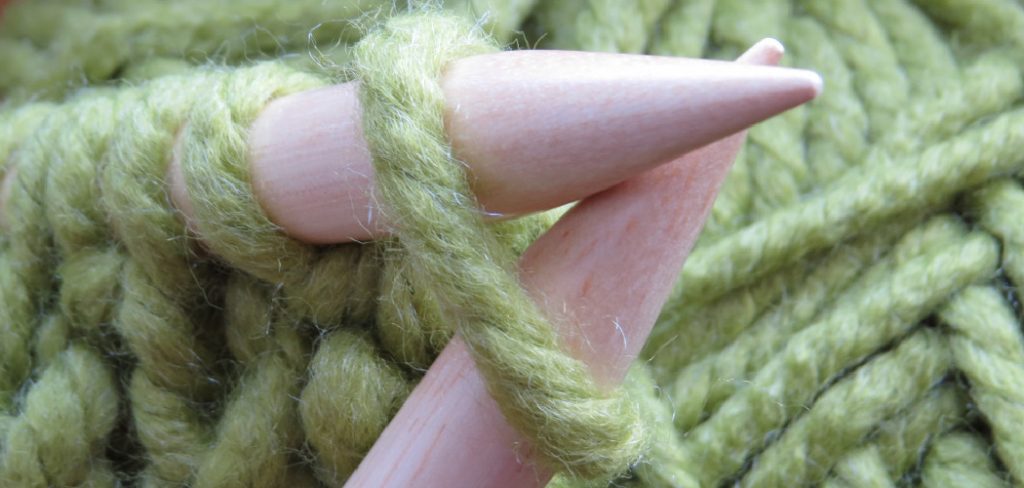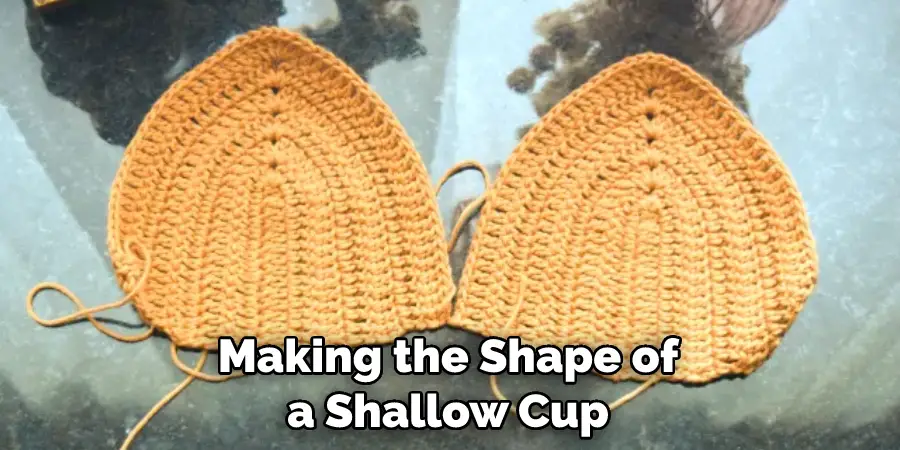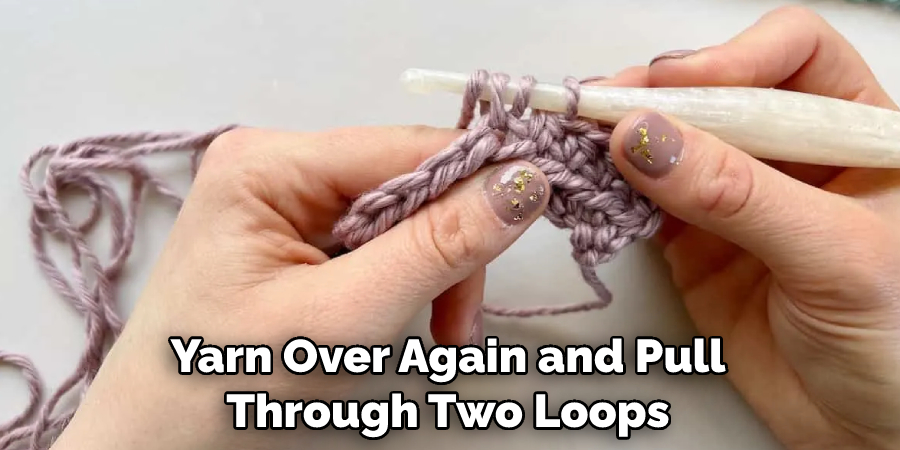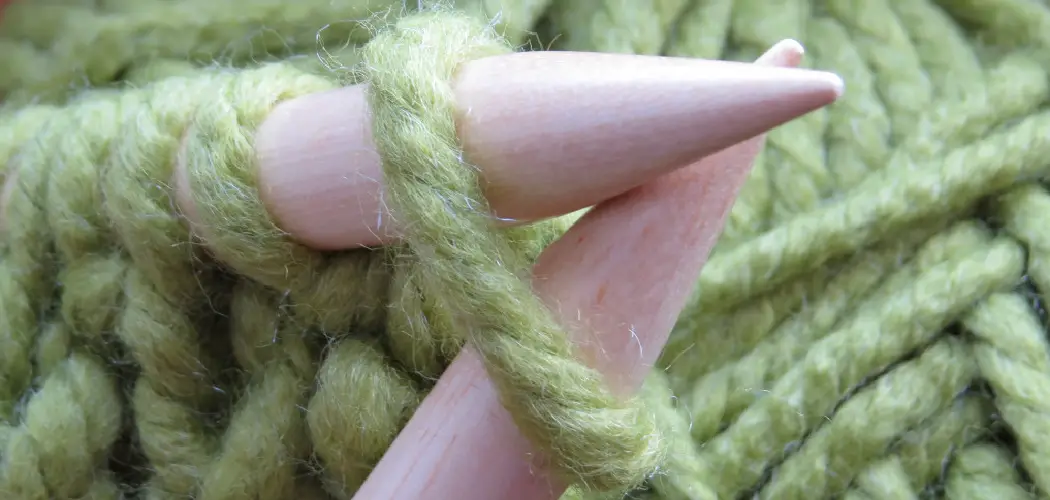Are you a crochet beginner looking to add more rows, stitches, and texture to your projects? Learning the double crochet increase is an essential part of mastering the craft and will ultimately provide endless possibilities for all the beautiful creations that await you.

With easy step-by-step instructions on how to double crochet increase from one of our experienced crocheters here at Your Crochet Community, we’ll guide you through this simple technique to increase your double crochet skills in no time!
How Do You Increase Double Crochet at the End of a Row?
Increasing double crochet at the end of a row is an easy way to add additional stitches and shape your project. To increase in double crochet, work two double crochets in the same stitch. This will increase one stitch at the end of your row. Once you have finished working the double crochet increases for that particular row, continue on with the pattern as usual.
It’s important to remember when increasing double crochet to count your new stitches so that you don’t lose track of how many rows or columns of stitches you have worked! When increasing multiple times at the end of a row, make sure to work each increase into its own stitch.
If, for example, you need to increase three times at the end of a row, you would work one double crochet into the last stitch, then two double crochets into the next stitch. Then, you would repeat this pattern until all of your increases are completed. Doing it this way ensures that each increase is worked into its own stitch rather than skipping over and working several stitches in one single stitch.
Once you have finished increasing at the end of your row, continue on with your project as per usual. If you’re ever unsure about how to add increases or decreases to a particular pattern or project, make sure to consult with an experienced crafter or read through any included instruction booklets for guidance!
10 Methods How to Double Crochet Increase
1. Regular Increase:
Start by working a double crochet stitch in the first stitch. Then, without completing the stitch, yarn over and insert your hook into the same stitch. Yarn over again and pull through the stitch, giving you three loops on the hook. Yarn over and pull through two loops, leaving two loops on the hook.

Yarn over again and insert your hook into the next stitch, completing the double crochet as normal. You have now increased by one stitch. If you need to increase further, repeat steps 2-4. However, if you need to increase by a larger number of stitches, then you will want to use the chain stitch increase.
2. V-Stitch Increase:
Work two double crochet stitches into the same stitch, creating a “V” shape. This is also known as a “cluster” stitch. It gives a much different look than the standard double crochet increase, creating a more textured, uneven surface.
To create this type of increase, start by chaining up two. With the last chain still on your hook, insert it into the same stitch where you are increasing. Then yarn over and pull up a loop. You will now have three loops on your hook.
Yarn over again and draw the yarn through two of the loops (leaving two loops on your hook). Yarn over once more and draw it through the last two loops. This completes one double crochet V-stitch increase. Repeat this as needed within your pattern.
3. Shell Stitch Increase:
Work three or more double crochet stitches into the same stitch, creating a shell shape. This works very well for making the shape of a shallow cup, but can also be used to create almost any other shape you want.
When done with multiple shells, they create an interesting texture and can be used to make a wide variety of garments. This stitch is especially effective when combined with other increases such as the single crochet increase.
To work this increase, insert your hook into the stitch and yarn over. Draw up a loop, yarn over, draw through two loops. Insert your hook into the same stitch, yarn over and draw up a loop, yarn over and draw through two loops again.

4. Spike Stitch Increase:
Work a double crochet stitch in the next stitch, then work a double crochet stitch into the stitch below the next stitch, skipping one stitch. There are two loops on the hook. Yarn over and pull through both loops to complete the increase.
This increase creates a “spike” look, hence the name. It is useful when wanting to create a textured design. When increasing in rows, you can use this stitch at the beginning and end of each row.
It will be indicated in a crochet pattern with the abbreviation “inc.” If the pattern specifies “2inc”, then you would use this stitch twice in a row before continuing with the pattern. When increasing in rounds, work this stitch around the entire round before moving on to the next round.
5. Popcorn Stitch Increase:
Work a popcorn stitch (a group of double crochet stitches worked together to create a puffy shape) in the next stitch, then work a double crochet stitch in the next stitch. This will create a double crochet increase of two stitches.
Popcorn stitches can be used to add texture and definition to certain projects, like blankets or sweaters. This increase can also be used to create interesting patterns in crochet designs. It’s a great way to spice up any project!
Although popcorn stitches are not as common an increase technique as the first four mentioned, some crocheters may prefer this method for certain projects.

6. Back Post Stitch Increase:
Work a double crochet stitch around the back post of the next stitch, then work a double crochet stitch in the next stitch. This will create two increases in the same stitch. You can use this method to increase your stitch count and make an interesting textured pattern.
Work several increases in the same stitch to create a more pronounced effect. When you are done, move on to the next stitch and repeat this process as necessary.
This method can be used to create interesting shapes and patterns in your crochet projects. Just be sure to keep track of your increases so you can work them evenly throughout your project.
7. Front Post Stitch Increase:
Work a double crochet stitch around the front post of the next stitch, then work a double crochet stitch in the next stitch. This increases one stitch. Continue to repeat these two stitches until the desired number of increases have been made.
If you are using this as part of a pattern, check the instructions to see if there is a special way to make the increase. For example, some patterns will require you to make a double crochet in the front post and then work two regular double crochets or even three.
Pay close attention to the instructions to ensure that you are following them correctly. While this technique is more advanced, it can be used to create beautiful raised textures in your project.
8. Extended Double Crochet Increase:
This stitch is slightly taller than a regular double crochet stitch. To work an extended double crochet increase, yarn over and insert your hook into the first stitch. Yarn over and pull up a loop, then yarn over and pull through one loop, creating a chain stitch.
Yarn over again and pull through two loops, leaving two loops on the hook. Yarn over and insert your hook into the same stitch, completing the extended double crochet as normal. Yarn over and pull up a loop, then yarn over and pull through one loop.
Yarn over again and pull through two loops, leaving three loops on the hook. Yarn over and pull through all three loops to complete an extended double crochet increase. The height of this stitch is identical to a regular double crochet stitch, with the added benefit of making your project slightly more open and structured.

9. Double Crochet Cluster Increase:
Work two double crochet stitches into the same stitch, then work a chain stitch. Work two more double crochet stitches into the same stitch, creating a cluster of stitches. This will create a single increase.
This can be used as an alternative to the traditional double crochet increase when you want more texture in your project. It is a great way to add shape and structure to afghans, sweaters, hats, and more. Be sure to count this cluster of stitches as one stitch when counting your stitches.
To make it easier, you can also use a stitch marker to mark off where the cluster is located. Following this method will help you keep track of your stitch count and make sure you have the right number of stitches.
10. Crossed Double Crochet Increase:
Skip the next stitch and work a double crochet stitch in the stitch after that. Then, work a double crochet stitch in the skipped stitch, crossing the stitches over each other.
This creates two stitches in the same stitch and increases your total stitch count. If you want to make sure the stitches are even, work an extra chain stitch before or after each double crochet stitch.
This will give your work a cleaner look and make the increase more even. Keep in mind that this technique can also be used to decrease your stitch count – just work fewer chain stitches between the double crochet stitches.
Thongs to Consider When Increasing Double Crochet
1. Increase Stitches One-by-One:
When increasing double crochet, it’s important to remember that you should increase one stitch at a time. The best way to do this is by crocheting two double crochet stitches in the same stitch as described in the previous section.

2. Keep Track of Increases:
It’s important to keep track of how many increases you have made throughout your work so that all parts of the pattern have the same number of stitches. This can easily be done with a row counter or keeping a tally on paper.
3. Watch Your Tension:
Increasing stitches can sometimes throw off your tension, so remember to make sure that you are still crocheting at an even tension as you make your increases. If necessary, take extra care when tightening up loops after increasing.
Conclusion
In conclusion, learning how to double crochet increase is a simple skill that can improve your crochet projects exponentially. Whether you’re following a pattern or creating something from your imagination, increasing can add dimension and flare to your work. It’s best to practice a few rounds of double crocheting increases before moving onto larger projects. Once you get the hang of it, though, you’ll be ready to take on any challenge!

